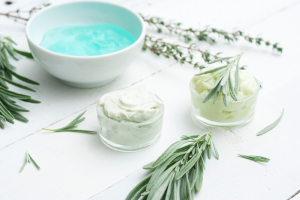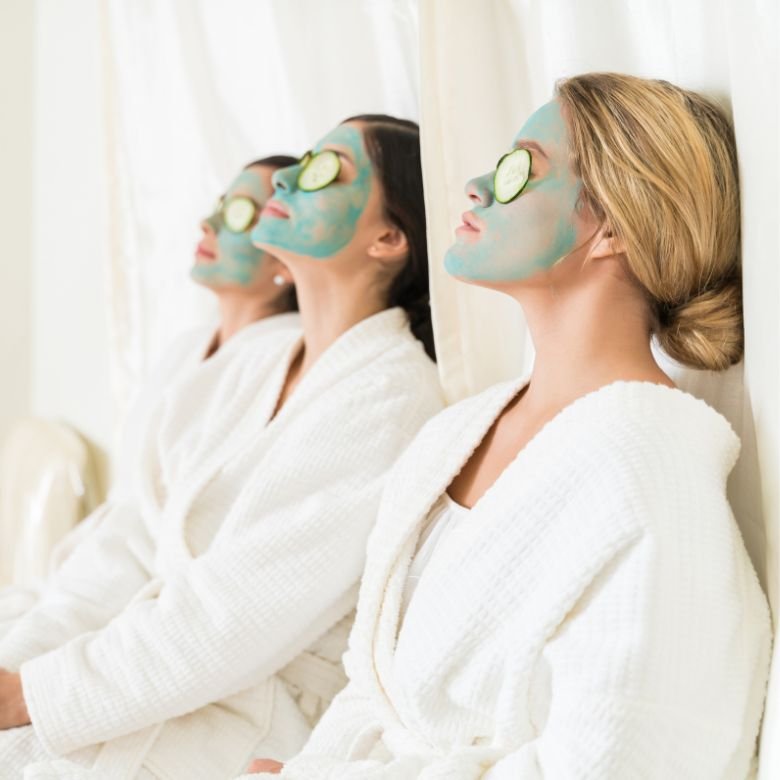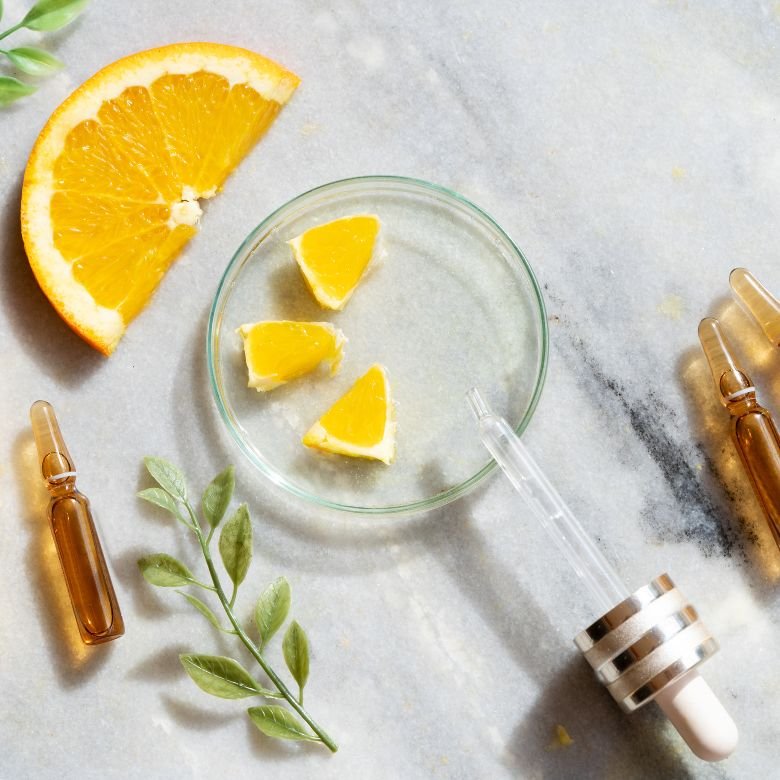The growing interest in natural cosmetics and healthy lifestyles brought about an increase in the popularity of antioxidants. The name ‘antioxidants’ is now commonly used. You can see it in commercials for many skin care products and foods as well as posts and brochures created by nutritionists and physicians. This builds awareness among consumers that antioxidants in cosmetics are important for their health. But what exactly does this mean, what are these substances and where can they be found? We have compiled all the most important information for you.

What are antioxidants?
The name ‘antioxidants’ as used in the cosmetic industry is no accident. This is because antioxidants are compounds that are capable of inhibiting the oxidation of certain substances. This characteristic provides exceptional support against excess free radicals.
- Free radicals are molecules or atoms that contain unpaired electrons.
- With a lost electron, radicals seek to get it back by either combining with other molecules or taking it away from neighbouring atoms.
- If there are too many free radicals in your body, this is called oxidative stress.
- In cosmetics, antioxidants are aimed at eliminating free radicals that affect the appearance and condition of the skin.
Now you may be wondering why we need to use antioxidants. In other words, what disturbs the balance of our body? Sadly, this has to do with our lifestyles that are nowadays full of stress, an unhealthy diet based on fast foods, smoking, overexposure to blue light and other harmful factors.
In order to achieve the best possible effects, we should provide our body with antioxidants not only from food. It is worth to get them in cosmetics as well.
- Antioxidants in cosmetics extend their shelf life.
- They inhibit the activity of free radicals by reacting with them. Moreover, antioxidants protect the body from UV radiation, which is one of the causes of excess free radicals in the body.
Antioxidants that are used in cosmetics are naturally sourced. They come from, among others, vegetables, fruits, herbs and spices. Some of the most powerful antioxidants are polyphenols, i.e. chemical compounds found in berries, green tea, pulses, nuts and cocoa. They are contained in an increasing number of skin care products, so the range of antioxidants available in cosmetics is constantly expanding.
How are antioxidants used in cosmetics?
Raw materials used for natural cosmetics are abundant in nutrients that are essential for keeping your skin healthy. Several antioxidants combined in a beauty product can bring stunning results!
Below, we explain that many antioxidants can interact to mutually boost their effect. Although vitamin E alone is beneficial to our health, manufacturers usually choose to combine it with vitamin C, coenzyme Q10 and other antioxidants that can improve regeneration.
Antioxidants in the cosmetic industry were shown to be highly effective, which was confirmed by many clinical studies. They can be found, among others, in:
- moisturising creams,
- regenerating serums,
- essences and emulsions,
- facial cleansers,
- masks.
See the finished cosmetic formulations in the PCC Group Formulation Zone.
It is worth using them all year round, both for your morning and evening skin care routine. If your skin only needs nourishment, you can use the most popular antioxidants in cosmetics and recommended products. However, if you are struggling with skin conditions or deficiencies, you might want to consult a specialist about your skin care routines in order to select the right ingredients for you.

Presenting you the most powerful cosmetic antioxidants
Antioxidants are very broadly used in the cosmetics industry. Manufacturers (read about cosmetics production) use ingredients such as plant extracts, vitamins, amino acids or polyphenols. However, there are a few particularly effective antioxidants. We have compiled their most important properties for you. See more cosmetic intermediates.
Vitamin E
It is one of the most potent antioxidants that should be included both in your diet and in your daily skin care. This antioxidant demonstrates the ability to react with free radicals, thus preventing damage to the cells in your body. In addition, it:
- deeply moisturises the skin,
- seals the tissue lipid barrier,
- slows down skin ageing processes,
- supports the healing of cuts and wounds,
- makes the skin more supple.
Vitamin E works well as an antioxidant in cosmetics. It is also an essential part of a healthy diet: it increases insulin sensitivity, boosts your immunity and is an important factor in transporting oxygen to the cells. It is sourced from plant products, including almonds, oils and cruciferous vegetables. The antioxidant is better absorbed when in combination with other vitamins, especially B, A and C vitamins.
Symptoms of vitamin E deficiency are manifested both in mood changes and on the skin. If you don’t ensure a proper level of vitamin E, your face will lose its glow and you will feel tired all the time. Therefore, antioxidant creams commonly contain vitamin E.
Vitamin C
It is one of the most commonly supplemented nutrients, recommended both as a medicine and as a substance to prevent infections. Vitamin C helps your body deal with inflammation and provides essential support in healing processes related not only to the respiratory system and common cold, but also the digestive tract.
In cosmetics, added vitamin C is extremely important because it promotes collagen synthesis. It also accelerates the healing of wounds and scars. As an antioxidant, vitamin C in the cosmetics industry works best in combination with vitamin E, as they improve regeneration and absorbability. Other cosmetic characteristics of this antioxidant include:
- redness reduction,
- sealing blood vessels,
- discolouration reduction,
- anti-inflammatory and anti-bacterial effects.
There are several forms of vitamin C used in the cosmetics industry. Among them, L-ascorbic acid is most popular, with its low pH and a high concentration of active ingredients in the product. Also ascorbyl tetraisopalmitate is quite common and its effects are linked to another antioxidant, the aforementioned vitamin E. It is important to note that it penetrates into the deep layers of the skin, exerting a strong regenerating effect.
- It is very important to choose the right form of vitamin C as each one addresses different needs.
- Some forms of vitamin C can irritate both the skin and mucous membranes.
- Various forms of this antioxidant in cosmetic products differ in their effects, absorbability, ability to react with other substances, and shelf life.
If you notice various forms of vitamin C in the composition of your cosmetics, try to see which one works best for your skin and try to use it regularly. You will definitely notice the effects.
Vitamin A
Vitamin A is an antioxidant that is widely used in the cosmetic industry. Retinol penetrates deep into the layers of the skin but has a mild effect, which is why it is recommended for sensitive skin. Creams with vitamin A are designed to:
- moisturise the skin and reduce water loss,
- reduce wrinkles,
- increase collagen production,
- exfoliate dead skin cells,
- inhibit bacterial activity,
- slow down skin ageing processes,
- support the fight against acne.
As an antioxidant, vitamin A is therefore a great choice for people of all ages.
Coenzyme Q10
In addition to the above vitamins, it is coenzyme Q10 that is one of the most popular and powerful antioxidants in beauty products. The properties of this compound were discovered in the 1950s and its applications have been expanding ever since.
Coenzyme Q10 occurs naturally in our bodies and ensures our cells are nourished. Over time, however, its level in cells decreases, leading to accelerated ageing and to feeling fatigued.
In cosmetics, this natural antioxidant can work wonders when used regularly. Its properties include:
- protection of the body from free radicals,
- vitamin E regeneration,
- powerful and effective epidermal reconstruction,
- reduction of wrinkles and oxidative stress damage,
- increased collagen production,
- improved skin elasticity and radiance.
A major advantage of coenzyme Q10 is its shelf life and thermal stability. It can be found as an ingredients in nourishing face serums as well as in numerous creams and masks. It is also found in food products, including high-quality olive oil. Thanks to its regenerating properties, this antioxidant is recommended for dry, tired and mature skin with signs of ageing.

Types of antioxidants in cosmetic products
Given the extensive range of antioxidant substances used in cosmetics, some people find it difficult to choose the right products. Therefore, it is worth to know that antioxidants are classified based on their effects. Below, we have outlined the key groups of these components.
Primary antioxidants
These antioxidants are not aimed at destroying free radicals, but at providing them with the missing electron. Therefore, they interrupt free radical reactions and protect our cells. This group includes the aforementioned polyphenols, found in natural (plant-derived) ingredients and tocopherols, as well as certain synthetic compounds. They are considered the most effective and powerful antioxidants in cosmetic products.
Secondary antioxidants
When used in the cosmetics industry, this group aims to reduce the activity of free radicals. Among others, such antioxidants can enhance the effects of primary antioxidants and improve their regeneration. These effects are demonstrated by phospholipids, ascorbic acid and beta-carotene, among others.
Synergistic antioxidants
You already know that certain types of antioxidants in cosmetics may be combined in order to boost each other’s effects. These are called synergistic antioxidants, a great example of which are combinations such as:
- vitamins C and E,
- vitamin C and bioflavonoids.
Using antioxidants with other minerals or vitamins, e.g., vitamin E and selenium or vitamin C and magnesium, also helps improve their effects. You should pay attention to these combinations both in the beauty products you choose and in your daily diet. You might expect much better results.

Is it worth using creams with antioxidants?
Any beauty product that contains antioxidants may be beneficial to your skin. However, it is moisturising creams that are most often chosen among beauty products. Not everyone uses serums and emulsions, but a moisturising cream with antioxidants should be a staple in every bathroom!
Depending on your skin type and product composition, antioxidant creams can be used in the morning or in the evening. Oftentimes, they should be featured at all stages of your skin care routine to guarantee the best possible results. The role of antioxidants in such cosmetics is based on:
- nourishing, regenerating and moisturising effects,
- their protective properties,
- wrinkle reduction,
- restoring the skin’s healthy appearance.
Using creams with antioxidants is not complicated and will not take much time, while the results can be truly spectacular. The range of available products in this category is extensive and offers varying price ranges, so you can be sure to find a product that meets your needs.
Remember, however, to pay close attention to the composition of the products. Choose natural ingredients and brands that care about sustainability and consumer health. You can find many good examples on the official website of the PCC Group!
When do you need to use antioxidants?
Antioxidants offer so many benefits to our health that their consumption and use is recommended to everyone. However, antioxidants are especially important if you are struggling with:
- chronic fatigue,
- inflammation,
- oxidative stress,
- dull skin and wrinkles,
- reduced immunity.
Cosmetics with antioxidants can then provide valuable support. Make sure you choose the right composition of your products and you will see how effective they can be! In PCC Group’s blog posts, you will find many tips to make a good choice. Make sure you read them and keep searching for new information to respond accordingly to the needs of your body.
- Piszcz, P., Dzwigałowska, M., & Głód, B. (2017). Całkowity potencjał antyoksydacyjny preparatów kosmetycznych zawierających ekstrakty roślinne. Camera Separatoria, 9(2), 53-64, https://czasopisma.uph.edu.pl/cameraseparatoria/article/view/2033/1715
- Gałka, U., & Ogonowski, J. (2010). Koenzym Q-powstawanie, właściwości i zastosowanie w preparatach kosmetycznych. LAB Laboratoria, Aparatura, Badania, 15(5), 14-21, https://bibliotekanauki.pl/articles/274361.pdf
- Smyk, P., Smyk, E., Hołyńska-Iwan, I., & Olszewska-Słonina, D. (2016). Połączenie filtrów naturalnych i sztucznych jako najlepsze źródło ochrony przeciwsłonecznej w preparatach kosmetycznych. Bydgoszcz: Uniwersytet Technologiczno-Przyrodniczy w Bydgoszczy, https://dlibra.pbs.edu.pl/Content/1113/PDF/SmykP_SmykE_Holynska-Iwan_Olszewska-Slonina_Polaczenie_filtrow_naturalnych.pdf
- https://chemia.ug.edu.pl/sites/default/files/_nodes/strona-chemia/63636/files/cwiczenie3oznaczanie_wlasciwosci_antyoksydacyjnych.pdf
- https://pl.wikipedia.org/wiki/Przeciwutleniacze
- https://www.superpharm.pl/blog/antyoksydanty-w-kosmetykach-rola-w-pielegnacji-przeciwstazeniowej-rady-eksperta
- https://www.doz.pl/czytelnia/a16803-Antyoksydanty_w_kosmetykach_i_terapiach_anti_age__rodzaje_efekty_stosowanie_wskazowki_przy_wyborze
- https://ecospa.pl/antyoksydanty-w-kosmetykach-jak-dzialaja
- https://ecospa.pl/witaminy-w-kosmetyce-wlasciwosci-i-zastosowanie
- https://ecospa.pl/charakterystyka-i-rola-witaminy-c-w-kosmetyce
- https://upacjenta.pl/poradnik/antyoksydanty-w-kosmetykach-ktorych-warto-szukac
